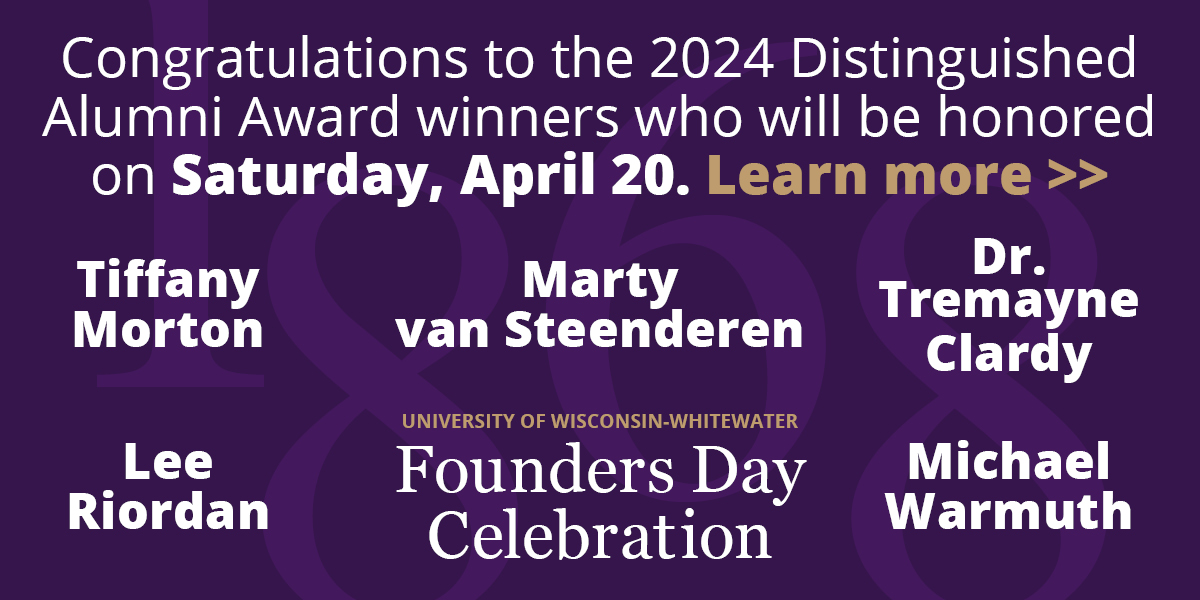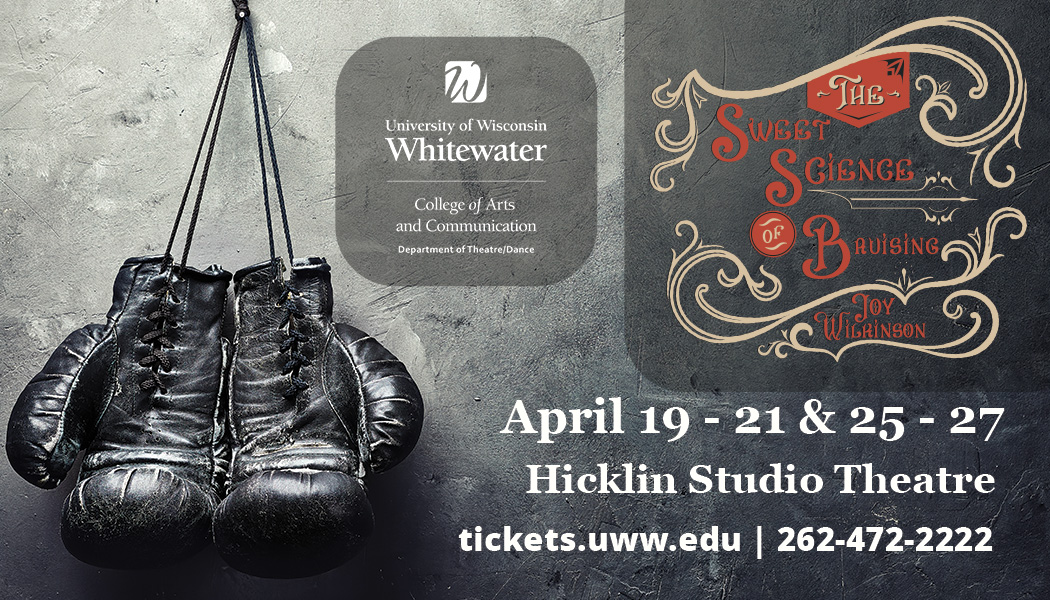By Vesna Brajkovic
April 2, 2014
More than 190 students from nearly every department on campus attended the 19th annual Undergraduate Research Day, on March 19 to present their research on various topics.
“Undergraduate research is working at UW-Whitewater partly because of the diversity of the projects,” Chancellor Richard Telfer said in his opening remarks. “Sometimes we get a misconception that undergraduate research is limited to one area of the campus. There are good examples here of this type of work extending to all four colleges on our campus.”
After the performing arts, poster and oral sessions of presentation, there was an awards ceremony that concluded Undergraduate Research Day.
Awards were given to a student in each category.
Senior Sarah Bregant received the Arts, Communication, and Humanities Poster Presentation award for her political science research “Voting Influences on Non-Partisan Electoral Positions in Local Legislatures.”
Under her mentor, political science professor Larry Anderson, Bregant focused on researching the factors that may influence voting decisions of local legislatures – town boards, village boards and city council – in Wisconsin.
Bregant, a member of the Whitewater City Council, surveyed 25 elected officials in Jefferson County through phone interviews.
Bregant asked them questions to determine whether personal political ideologies had any effect on their decision-making.
“The decision-making framework that exists at federal and state levels, where you’re elected by a party, doesn’t exist on a local level,” Bregant said. “So, I was kind of curious as to what local level officials are thinking about when they’re voting on items.”
The questions asked were based on four indicators that Bergant said she thought might influence their decision-making. The four indicators were their political ideologies, or partisan identification, district political identification, or collection ideologies, chances at re-election, and fiscal impacts.
Bregant concluded that because local officials dealt with issues largely non-partisan in nature that the most important factors in decision-making were good of the community, fiscal responsibility and long-term effects.
Another student, senior Abbey Bowen, under her mentor Leda Nath, presented her research “Comparing Cultures: Fashion Models in the United States and India.”
While interning for a lifestyle magazine in India last summer, Bowen said that she noticed the difference between models in fashion magazines in India and the U.S.
Her research focuses on uncovering how the cultural norms, ideas and values affect the portrayal of female models in these countries.
Bowen examined the advertisements in 2013 issues of Cosmopolitan and Cosmopolitan India and noticed, among other variables, that the body types of women in fashion magazines in India were mesomorphic, while the body types of the women in the U.S fashion magazines were mostly ectomorphic.
Mesomorphic body types are strong, of average height and more curvy, while ectomorphic body types are tall, thinner than average and have leaner muscle mass.
Sophomore Kassandra Hodges presented her research, “Female CEO: Characteristics and Traits,” on discovering which personal demographics, such as education and age, assist females in becoming a chief executive officer.
Along with secondary research on common themes in current and past female CEO’s, Hodges and her mentor, Christina Outlay, started researching in the Midwest and are hoping to expand nationally and globally to compare results.
Overall, the research concluded that Missouri and Minnesota had the highest percentage of female CEOs with 8 and 7 percent, compared with the 5 percent national average. Wisconsin had significantly lower percent of female CEOs with 2.7 percent.
Hodges said although she didn’t like the result, it was close enough within the national average that it wasn’t too surprising.
Provost Beverly Kopper said, in her opening remarks, that the undergraduate research program gives her “great confidence” in the future.
“This is amazing work and this is – when you look at all of the interactions between students, faculty and staff, and the synergy that’s created by undergraduate research – this is where the magic is,” Kopper said.
This small sampling of research exemplifies the diversity of the programs and the projects that are being conducted and were shown at Undergraduate Research Day.
“These…efforts of undergraduate research are improving the lives of all of our students, our community members, our state residents and the world,” Telfer said during opening remarks.












